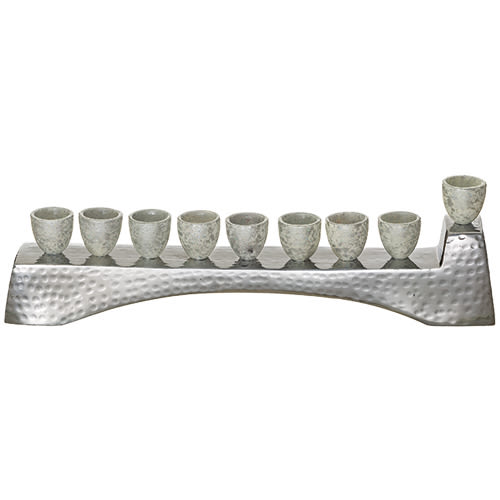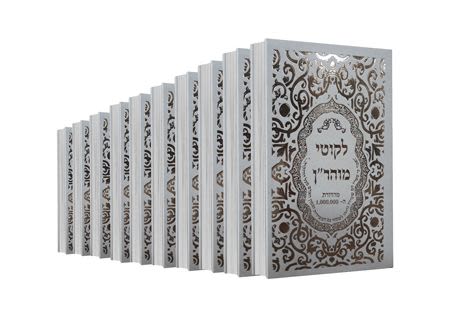
Shatnez
Through these commandments we're able to cleave to God with the entirety of our selves. Just because we live in a state of not knowing, it doesn't mean that we...

Through these commandments we’re able to cleave to God with the entirety of our selves. Just because we live in a state of not knowing, it doesn’t mean that we aren’t being led.
A friend of mine recently told me the following story. She was presented with a stunning second-hand, light-weight Shabbat suit. It was a perfect fit and she wore it the entire summer. Erev Pesach, she looked for washing instructions and discovered — to her horror — that the material consisted of “60% wool, 20% polyester and 20% linen.” The material was shatnez, a mixture of wool and linen prohibited by the Torah! My friend was devastated, and begged me to do whatever I could to prevent other people from unintentionally transgressing a Torah prohibition.
What is Shatnez? The Torah clearly prohibits a Jew from wearing or covering himself with fabric containing a combination of wool and linen: “A shatnez garment should not cover you” (Vayikra 19:19) and “Do not wear shatnez, wool and linen together” (Devarim 22:11).
The word shatnez is an acronym for the Hebrew words “shua” “combined”; “tavey” “spun”; “nuz” “woven”. This demonstrates that wool and linen may not be mixed in any of these fashions. The Sages made an additional legislation prohibiting any lasting combination of wool and linen.
Even one thread of wool in a linen garment or vice versa, renders the entire garment Shatnez, and it is prohibited to wear it.
Here are a few basic Halachot:
A. It is prohibited to wear a garment that might contain shatnez until it has been checked.
B. Even garments that aren’t made of wool or linen might contain shatnez in the shoulder padding, collars (woolen collars sewn with linen thread or filled with linen), linings, etc. There are dozens of places where shatnez might be found.
C. Here is a partial list of the garments that might contain Shatnez:
1. Coats (winter coats, jackets, even leather coats because of the lining).
2. Trousers (linen thread is used extensively nowadays).
3. Dresses and skirts (mainly winter).
4. Shirts can be made from linen, and often woolen thread is used to sew on parts of the shirt (this pertains to skirts and dresses as well).
5. Robes (mainly the winter ones).
6. Scarves.
7. Sweaters, hats (generally the inexpensive ones), berets, etc.
8. Ataros of Talitot (they can be made of linen and the tallit is wool).
9. Shoes (that are lined), slippers, boots (generally the expensive kind).
10. Children’s clothing and hats.
11. Sofas (linen thread is generally used. Nowadays, the fabric itself is generally synthetic, but wool can still be found in some sofas).
12. Tablecloths, curtains, potholders (the glove kind).
13. Needlepoint backgrounds are often made out of linen. If wool is used in the needlepoint, then the needlepoint cannot be used as a pillowcase or as a rug.
Shatnez applies only to wool (sheep’s wool) and linen.
A. There is no problem with camel’s hair, rabbit, cotton, etc.
B. Sometimes labels can be misleading, especially in foreign languages:
- “Laine” in French is wool, while “lin” in French means linen.
- Labels stating that the garment contains “animal fibers,” “mixed fibers,” or “other fibers” can mean that the garment contains wool and/or linen.
- There have also been cases where, either intentionally or by mistake, labels have been completely wrong (stating that the garment was 100% cotton when it was 100% linen, etc).
C. Nowadays there is extensive use made of reprocessed clothing that can contain Shatnez.
David Sacks, co-founder of the Happy Minyan of Los Angeles and Emmy Award-winning writer-producer wrote (Olam Magazine issue VI), “I remember a friend once asked me, at a critical moment in my Jewish growth, whether an ant can out-think a man. I said of course not. And he said, “Then how can man out-think God? We make the mistake of making God too small, of trying to make God fit into our limited consciousness instead of glorying in the fact that He is so beyond what we can ever know. Ultimately the mind is just one of our faculties. There’s a deeper, more intuitive place within us. One of the beautiful aspects of Torah is that there is an entire category of laws, called chukim, designed specifically to nurture this place within us. These are laws which cannot be understood through rational thought alone – like shatnez, the prohibition against mixing wool and linen together in garments. Through these commandments we’re able to cleave to God with the entirety of our selves. Just because we live in a state of not knowing, it doesn’t mean that we aren’t being led.










Tell us what you think!
Thank you for your comment!
It will be published after approval by the Editor.